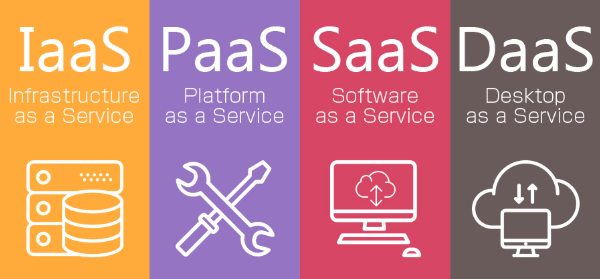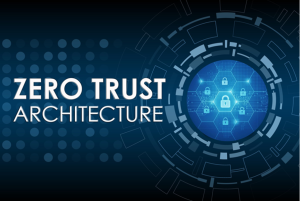The Evolution of Cybercrime: Dark Web and Cybercrime-as-a-Service (CaaS)
Understanding the Dark Web
The Dark Web refers to a hidden part of the internet that is not indexed by traditional search engines and can only be accessed through specialized software such as Tor (The Onion Router). While the Dark Web hosts legitimate uses, such as secure communication for whistleblowers and journalists, it is also a hub for illegal activities. Criminal marketplaces on the Dark Web facilitate the sale of stolen data, hacking tools, illicit drugs, counterfeit documents, and even services like contract hacking.
Key characteristics of the Dark Web include:
⦁ Anonymity: Users remain largely untraceable due to encryption and decentralized routing.
⦁ Cryptocurrency Transactions: Payments are typically made in Bitcoin or other cryptocurrencies to ensure anonymity.
⦁ Illegal Marketplaces: Platforms such as AlphaBay (before its takedown) and current successors act as e-commerce hubs for cybercriminal activities.
The Emergence of Cybercrime-as-a-Service (CaaS)
Cybercrime-as-a-Service (CaaS) is a business model in which cybercriminals offer hacking tools, services, and expertise for sale or rent. This model lowers the barrier to entry for cybercrime, allowing individuals with little to no technical expertise to launch sophisticated attacks.

Common CaaS Offerings
⦁ Ransomware-as-a-Service (RaaS): Malicious actors sell or lease ransomware variants, allowing buyers to conduct extortion attacks without developing their own malware.
⦁ Phishing Kits: Pre-made phishing templates and automation tools enable attackers to create convincing email scams.
⦁ DDoS-for-Hire: Cybercriminals rent out botnets to perform Distributed Denial-of-Service (DDoS) attacks against websites and networks.
⦁ Credential Dump Services: Stolen username and password combinations are sold, enabling further cyberattacks.
⦁ Malware and Exploit Kits: Ready-made software exploits help criminals bypass security measures and infiltrate systems.
⦁ Data-as-a-Service (DaaS): Cybercriminals sell curated databases containing personal and financial information.
⦁ Malware-as-a-Service (MaaS): A broader service where various malware, including Trojans and spyware, are provided on a subscription basis.
⦁ Phishing-as-a-Service (PhaaS): Turnkey phishing campaigns available for purchase, complete with hosting and automation tools.
The CaaS model has made cybercrime more accessible, scalable, and dangerous than ever before, contributing to a surge in global cyber incidents.
The Impact of Dark Web and CaaS on Cybersecurity
The proliferation of Dark Web marketplaces and CaaS operations has significant implications for cybersecurity at various levels:
⦁ Corporate Security Breaches: Companies face heightened risks of data breaches, ransomware attacks, and financial fraud.
⦁ National Security Threats: Governments are increasingly concerned about cyber espionage, critical infrastructure attacks, and state-sponsored hacking.
⦁ Financial and Economic Damage: The global cost of cybercrime is expected to reach trillions of dollars annually, affecting businesses, consumers, and economies.
⦁ Loss of Privacy and Identity Theft: Personal data, including Social Security numbers, credit card details, and medical records, are frequently sold on the Dark Web.
Combating Dark Web and CaaS Threats
To mitigate the risks posed by Dark Web-enabled cybercrime, organizations and law enforcement agencies must adopt a multi-faceted approach:
- Strengthening Cybersecurity Posture
⦁ Implementing Zero Trust Architecture to minimize access risks.
⦁ Enhancing endpoint security and network monitoring.
⦁ Deploying AI-driven threat detection to identify anomalies in real time. - Law Enforcement and International Collaboration
⦁ Agencies such as Europol, the FBI, and Interpol conduct operations to dismantle illegal marketplaces.
⦁ Governments collaborate to establish stricter regulations on cryptocurrency transactions used for illicit purposes. - Dark Web Monitoring and Threat Intelligence
⦁ Organizations leverage Dark Web monitoring tools to detect potential data breaches and threats in underground forums.
⦁ Cyber threat intelligence firms provide insights into emerging cybercrime tactics and help businesses preemptively secure their systems. - Cybersecurity Awareness and Training
⦁ Companies must educate employees about phishing, ransomware, and other cyber threats.
⦁ Public awareness campaigns should highlight the dangers of using the Dark Web for illicit activities.
Rethinking Cybersecurity in the Face of New Threats
As cybercrime continues to evolve, traditional security measures alone are no longer sufficient. The rise of the Dark Web and Cybercrime-as-a-Service has demonstrated that cyber threats are not only becoming more advanced but also more widely accessible. To stay ahead, organizations must adopt proactive security strategies, embrace emerging technologies, and strengthen global collaboration efforts. By shifting the focus from reactive defense to intelligence-driven prevention, the cybersecurity community can work toward disrupting illicit networks and safeguarding digital ecosystems. The battle against cybercrime is an ongoing challenge, but with the right approach, the digital world can remain a safer place for individuals and enterprises alike.




